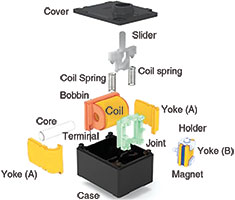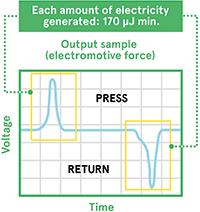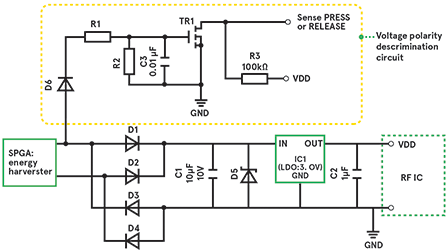

Trends such as digital business transformation, the Internet of Things (IoT) and Industry 4.0 are driving demands for more and more diverse types of smart objects that are becoming ingrained, pervasive, and widely distributed throughout modern homes, businesses and infrastructures.
A large office building, factory or hotel could contain hundreds, or even thousands, of smart light switches, occupancy sensors, intruder or activity detectors, temperature sensors or alarm units. On the other hand, sensors embedded in movable assets such as shipping containers, machinery or vehicles could be located anywhere within a local geographical area, or globally, at any given time.
In situations such as these, replacing discharged batteries can be logistically challenging and expensive, especially if travelling is involved to reach devices in remote locations. As the world becomes increasingly smart and connected, batteries – although a convenient and portable source of energy for many applications – are not always the right choice in some of the emerging use cases. An alternative is needed that can help achieve longer operating lifetimes, relieve ownership costs, and ideally improve reliability and sustainability.
What are the options?
Fortunately we can now build sensing, signal conditioning, and communication circuits that consume considerably less power than earlier generations, thanks to advanced IC fabrication technologies and ultra-low-power chip design knowhow. Some products, such as smoke alarms or gas sensors, can be engineered to operate for their entire intended lifetime – up to several years in some cases – from a small primary battery that never needs to be changed.
Energy harvesting – such as recovering kinetic energy expended by a human operator pushing a button, and converting this into electrical energy – offers new ways to avoid battery replacement and potentially increase the reliability and longevity of a host of small electronic devices. If the peak system power exceeds the capability of the harvesting system, the recovered energy can be used to charge a rechargeable battery for powering the system.
Alternatively, harvested energy could be used to charge a supercapacitor to supply short-term, high-power demands. In some applications, the power demand and duty cycle can be so low that energy harvested from ambient sources is enough to supply the system’s needs, using just a small capacitor for stabilisation.
In addition to remotely located IoT devices, there are several other use cases where it makes sense to take advantage of kinetic energy to power RF circuitry for communicating data such as device status or event detection. Some examples include smart tools, such as wireless torque wrenches that automatically send quality and traceability data to manufacturing management software.
With energy harvesting, these can become maintenance-free, thereby increasing availability and uptime. Other examples include tool-storage systems capable of detecting when a tool has been lifted from its cradle, or one-touch remote controls for activating mechanisms such as automatic gates or garage doors.
Emergency equipment is another category of devices that can benefit by replacing battery power with kinetic energy harvesting. An emergency help button, by its nature, stands unused for most of its lifetime but must operate perfectly the instant it is needed. A battery for powering wireless circuitry to summon help may discharge over time unless regularly checked. Using energy harvesting in these, or similar devices, such as actuation detectors for fire extinguishers, eliminates this possibility.
Capturing kinetic energy
Among various phenomena that can be harnessed to convert kinetic to electrical energy, taking advantage of electromagnetic principles according to Faraday’s Induction Law can deliver a high yield for a relatively short range of motion. The Faraday law is:
Where:
V = Induced electromotive force (EMF).
N = Number of coil turns.
Change of magnetic flux per unit of time

Figure 1 shows how the SPGA electromagnetic module from ALPS combines a coil, core, magnetic components and slider mechanism to convert kinetic energy associated with movement of the slider into an EMF. The coil parameters and the properties of the magnetic materials are engineered to ensure a large induced EMF.
With a switching distance of 3,3 mm, depressing the button at a test speed of 20 mm/s has been shown to generate a positive pulse containing 170 μJ of energy. When the button is released, a similar negative pulse is produced. This is enough to enable a sub-GHz radio system to transmit a short data packet using a low-power protocol.

Figure 2 shows the waveform of the EMF generated by depressing and releasing the switch. To power a circuit using the energy harvested, the pulses must first be rectified as illustrated in the energy-harvesting reference circuit, shown in Figure 3. In this circuit, the rectified pulses charge the capacitor C2, which is connected to the low-power LDO (low drop-out regulator) IC3 to energise the power rail, VDD. Note also that the positive and negative pulses can be used to determine the direction of motion.

The circuit containing TR1 provides a press/release indicator with polarity discrimination, which allows the switch to be used as a battery-less sensor for detecting open/closed status of washroom doors, automatic gates, equipment lockers, display cabinets and similar mechanisms. The SPGA module is designed to be securely mounted on a printed circuit board, with two through-hole solder terminals and provision for a Taptite screw at each corner.
This type of cost-effective, high-yield energy harvesting mechanism, with built-in sensing capability, could help enable a large number of smart objects, whether connected to the IoT or otherwise, to operate for a lifetime without battery replacement, or even go completely battery-less, and benefit from reduced maintenance, lower ownership costs and greater sustainability.

© Technews Publishing (Pty) Ltd | All Rights Reserved